
- •Functions
- •The Concept of a Function
- •Trigonometric Functions
- •Inverse Trigonometric Functions
- •Logarithmic, Exponential and Hyperbolic Functions
- •Limits and Continuity
- •Introductory Examples
- •Continuity Examples
- •Linear Function Approximations
- •Limits and Sequences
- •Properties of Continuous Functions
- •The Derivative
- •The Chain Rule
- •Higher Order Derivatives
- •Mathematical Applications
- •Antidifferentiation
- •Linear Second Order Homogeneous Differential Equations
- •Linear Non-Homogeneous Second Order Differential Equations
- •Area Approximation
- •Integration by Substitution
- •Integration by Parts
- •Logarithmic, Exponential and Hyperbolic Functions
- •The Riemann Integral
- •Volumes of Revolution
- •Arc Length and Surface Area
- •Techniques of Integration
- •Integration by formulae
- •Integration by Substitution
- •Integration by Parts
- •Trigonometric Integrals
- •Trigonometric Substitutions
- •Integration by Partial Fractions
- •Fractional Power Substitutions
- •Numerical Integration
- •Integrals over Unbounded Intervals
- •Discontinuities at End Points
- •Improper Integrals
- •Sequences
- •Monotone Sequences
- •Infinite Series
- •Series with Positive Terms
- •Alternating Series
- •Power Series
- •Taylor Polynomials and Series
- •Applications
- •Parabola
- •Ellipse
- •Hyperbola
- •Polar Coordinates
- •Graphs in Polar Coordinates
- •Areas in Polar Coordinates
- •Parametric Equations
48 |
CHAPTER 2. LIMITS AND CONTINUITY |
This completes the proof of Theorem 2.1.1.
Theorem 2.1.2 If f and g are two functions that are continuous on a common domain D, then the sum, f + g, the di erence, f − g and the product, fg, are continuous on D. Also, f/g is continuous at each point x in D such that g(x) 6= 0.
Proof. If f and g are continuous at c, then f(c) and g(c) are real numbers and
lim f(x) = f(c), lim g(x) = g(c).
x→c |
x→c |
By Theorem 2.1.1, we get
lim(f(x) + g(x)) = lim f(x) + lim g(x) = f(c) + g(c)
x→c x→c x→c
lim(f(x) − g(x)) = lim f(x) − lim g(x) = f(c) − g(c)
x→c x→c x→c
|
|
|
lim(f(x)g(x)) = |
lim f(x) |
lim(g(x)) = f(c)g(c) |
x→c |
x→c |
x→c |
|
f(x) |
limx→c f(x) |
f(c) |
|
||
lim |
|
= |
|
= |
|
, if g(c) = 0. |
x→c |
g(x) |
limx→c g(x) |
g(c) |
6 |
||
This completes the proof of Theorem 2.1.2.
2.1.4Continuity Examples
Example 2.1.10 Show that the constant function f(x) = 4 is continuous at every real number c. Show that for every constant k, f(x) = k is continuous at every real number c.
First of all, if f(x) = 4, then f(c) = 4. We need to show that
lim 4 = 4.
x→c
graph
For each > 0, let δ = 1. Then
|f(x) − f(c)| = |4 − 4| = 0 <

2.1. INTUITIVE TREATMENT AND DEFINITIONS |
49 |
for all x such that |x − c| < 1. Secondly, for each > 0, let δ = 1. Then
|f(x) − f(c)| = |k − k| = 0 <
for all x such that |x − c| < 1. This completes the required proof.
Example 2.1.11 Show that f(x) = 3x − 4 is continuous at x = 3. Let > 0 be given. Then
|f(x) − f(3)| = |(3x − 4) − (5)|
=|3x − 9|
=3|x − 3|
<
whenever |x − 3| < .
3
We define δ = 3. Then, it follows that
lim f(x) = f(3)
x→3
and, hence, f is continuous at x = 3.
Example 2.1.12 Show that f(x) = x3 is continuous at x = 2. Since f(2) = 8, we need to prove that
lim x3 = 8 = 23.
x→2
graph
Let > 0 be given. Let us concentrate our attention on the open interval

50 CHAPTER 2. LIMITS AND CONTINUITY
(1, 3) that contains x = 2 at its mid-point. Then
|f(x) − f(2)| = |x3 − 8| = |(x − 2)(x2 + 2x + 4)| = |x − 2| |x2 + 2x + 4|
≤ |x − 2|(|x|2 + 2|x| + 4) (Triangle Inequality |u + v| ≤ |u| + |v|)
≤ |x − 2|(9 + 18 + 4) = 31|x − 2|
<
Provided
|x − 2| < 31.
Since we are concentrating on the interval (1, 3) for which |x − 2| < 1, we need to define δ to be the minimum of 1 and 31. Thus, if we define δ = min{1, /31}, then
|f(x) − f(2)| <
whenever |x − 2| < δ. By definition, f(x) is continuous at x = 2.
Example 2.1.13 Show that every polynomial P (x) is continuous at every c.
From algebra, we recall that, by the Remainder Theorem,
P (x) = (x − c)Q(x) + P (c).
Thus,
|P (x) − P (c)| = |x − c||Q(x)|
where Q(x) is a polynomial of degree one less than the degree of P (x). As in Example 12, |Q(x)| is bounded on the closed interval [c − 1, c + 1]. For example, if
Q(x) = q0xn−1 + q1xn−2 + · · · + qn−2x + qn−1
|Q(x)| ≤ |q0| |x|n−1 + |q1| |x|n−2 + · · · + |qn−2| |x| + |qn−1|. Let m = max{|x| : c − 1 ≤ x ≤ c + 1}. Then
|Q(x)| ≤ |q0|mn−1 + |q1|mn−2 + · · · + qn−2m + |qn−1| = M,

2.1. INTUITIVE TREATMENT AND DEFINITIONS |
|
|
|
|
51 |
|||||||||||||||||||||||||
for some M. Then |
|
|
|
|
|
|
|
|
|
|
|
|
|
|
|
|
|
|
||||||||||||
|
|
P (x) P|(c)− |
|P (x) − P (c)| = |x − c| |Q(x)| ≤ M|x − c| < |
|
|
|
o |
|||||||||||||||||||||||
|
|
<| |
, whenever |
|
x |
c < δ. Hence, |
n |
|
||||||||||||||||||||||
whenever |
x |
c |
< |
|
. As in Example 12, we define δ = min |
1, |
. Then |
|||||||||||||||||||||||
| |
|
|
|
− |
| |
|
|
M |
| |
− |
| |
|
|
|
|
|
|
|
|
|
|
|
M |
|
||||||
|
|
|
|
|
|
|
|
|
|
|
|
|
|
|
|
|
|
|
|
|
|
|||||||||
|
|
|
|
|
|
|
|
|
|
|
|
|
lim P (x) = P (c) |
|
|
|
|
|
||||||||||||
|
|
|
|
|
|
|
|
|
|
|
|
|
x→c |
|
|
|
|
|
|
|
|
|
|
|
|
|
|
|
|
|
and by definition P (x) is continuous at each number c. |
|
|
|
|
|
|||||||||||||||||||||||||
Example 2.1.14 Show that f(x) = |
1 |
is continuous at every real number |
||||||||||||||||||||||||||||
x |
||||||||||||||||||||||||||||||
c > 0. |
|
|
|
|
|
|
|
|
|
|
|
|
|
|
|
|
|
|
|
|
|
|
|
|
||||||
|
|
|
|
|
|
|
|
|
|
|
|
|
|
|
|
|
|
|
|
|
|
|
|
|
||||||
|
|
|
|
We need to show that |
|
|
|
1 |
|
|
|
1 |
|
|
|
|
|
|
|
|
|
|||||||||
|
|
|
|
|
|
|
|
|
|
|
|
|
lim |
= |
|
. |
|
|
|
|
|
|
|
|||||||
|
|
|
|
|
|
|
|
|
|
|
|
|
|
x |
|
|
|
|
|
|
|
|
||||||||
|
|
|
|
|
|
|
|
|
|
|
|
|
x→c |
|
|
|
|
c |
|
|
|
|
|
c |
|
|||||
Let > 0 be given. Let us concentrate on the interval |x − c| ≤ |
|
; that is, |
||||||||||||||||||||||||||||
|
|
|
||||||||||||||||||||||||||||
2 |
||||||||||||||||||||||||||||||
|
c |
|
|
3c |
|
|
|
|
|
|
|
|
|
|
|
|
|
|
|
|
|
|
|
|
|
|
||||
|
|
|
≤ x ≤ |
|
. Clearly, x 6= 0 in this interval. Then |
|
|
|
|
|
||||||||||||||||||||
2 |
2 |
|
|
|
|
|
||||||||||||||||||||||||
|
|
|
|
|
|
|
|
|
|
|
|f(x) − f(c)| = |
x |
− c |
|
|
|
|
|
||||||||||||
|
|
|
|
|
|
|
|
|
|
|
|
|
|
|
|
|
|
1 |
|
|
|
1 |
|
|
|
|
|
|
||
|
|
|
|
|
|
|
|
|
|
|
|
|
|
|
|
|
|
c |
|
|
|
x |
|
|
|
|
|
|
|
|
|
|
|
|
|
|
|
|
|
|
|
|
|
|
|
= |
|
|
− |
|
|
|
|
|
|
|
|
||||
|
|
|
|
|
|
|
|
|
|
|
|
|
|
|
|
|
|
|
cx |
|
|
|
|
|
|
|
||||
|
|
|
|
|
|
|
|
|
|
|
|
|
|
|
|
|
|
|
|
|
|
|
|
|
|
|
|
|
||
|
|
|
|
|
|
|
|
|
|
|
|
|
|
|
|
|
|
|
|
|
|
|
|
|
|
|
|
|
||
|
|
|
|
|
|
|
|
|
|
|
|
|
|
|
|
|
|
|
|
|
|
|
|
|
|
|
|
|
||
=|x − c| · 1c · |x1|
<|x − c| · 1c · 2c
=c22 |x − c|
whenever |x − c| < |
c2 |
|
|
|
|
|
|
. |
|
|
|
|
|
2 |
|
|
c2 |
|
||
We define δ = min |
c |
, |
. Then for all x such that |x − c| < δ, |
|||
2 |
2 |
|||||
1 |
1 |
|
< . |
|||
x |
− c |
|||||
|
|
|
|
|
|
|
|
|
|
|
|
|
|
52 |
|
CHAPTER 2. LIMITS AND CONTINUITY |
|||||||
Hence, |
|
|
1 |
|
1 |
|
|
|
|
|
|
lim |
= |
|
|
|
|||
|
|
x |
c |
|
|
||||
|
1 |
x→c |
|
|
|
||||
and the function f(x) = |
is continuous at each c > 0. |
|
|
||||||
x |
1 |
|
|||||||
|
|
|
|
|
|
|
|||
A similar argument can be used for c < 0. The function f(x) = |
is |
||||||||
x |
|||||||||
|
|
|
|
|
|
|
|
||
continuous for all x 6= 0.
Example 2.1.15 Suppose that the domain of a function g contains an open interval containing c, and the range of g contains an open interval containing g(c). Suppose further that the domain of f contains the range of g. Show that if g is continuous at c and f is continuous at g(c), then the composition f ◦ g is continuous at c.
We need to show that
lim f(g(x)) = f(g(c)).
x→c
Let > 0 be given. Since f is continuous at g(c), there exists δ1 > 0 such that
1.|f(y) − f(g(c))| < , whenever, |y − g(c)| < δ1.
Since g is continuous at c, and δ1 > 0, there exists δ > 0 such that
2.|g(x) − g(c)| < δ1, whenever, |x − c| < δ.
On replacing y by g(x) in equation (1), we get
|f(g(x)) − f(g(c))| < , whenever, |x − c| < δ.
By definition, it follows that
lim f(g(x)) = f(g(c))
x→c
and the composition f ◦ g is continuous at c.
Example 2.1.16 Suppose that two functions f and g have a common domain that contains one open interval containing c. Suppose further that f and g are continuous at c. Then show that
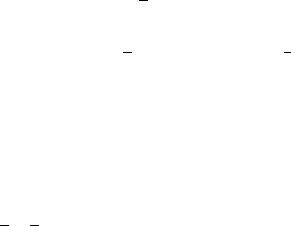
2.1. INTUITIVE TREATMENT AND DEFINITIONS |
53 |
(i)f + g is continuous at c,
(ii)f − g is continuous at c,
(iii)kf is continuous at c for every constant k 6= 0,
(iv)f · g is continuous at c.
Part (i) We need to prove that
lim [f(x) + g(x)] = f(c) + g(c).
x→c
Let > 0 be given. Then |
|
> 0. |
Since f is continuous at c and |
|
|
> 0, there |
|||
|
2 |
||||||||
|
2 |
|
|
|
|
||||
exists some δ1 > 0 such that |
|
|
|
|
|
|
|||
(1) |
|f(x) − f(c)| < |
|
, whenever, |x − c| ≤ δ1. |
|
|
|
|||
|
|
|
|
|
|||||
2 |
|
|
|
||||||
Also, since g is continuous at c and 2 > 0, there exists some δ2 > 0 such that
(2)|g(x) − g(c)| < 2, whenever, |x − c| < 2δ .
Let δ = min{δ1, δ2}. Then δ > 0. Let |x − c| < δ. Then |x − c| < δ1 and |x − c| < δ2. For this choice of x, we get
|{f(x) + g(x)} − {f(c) + g(c)}|
= |{f(x) − f(c)} + {g(x) − g(c)}|
≤ |f(x) − f(c)| + |g(x) − g(c)| (by triangle inequality)
<2 + 2
=.
It follows that
lim (f(x) + g(x)) = f(c) + g(c)
x→0
and f + g is continuous at c. This proves part (i).
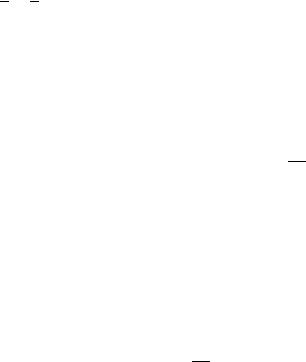
54 |
CHAPTER 2. LIMITS AND CONTINUITY |
Part (ii) For Part (ii) we chose , /2, δ1, δ2 and δ exactly as in Part (i). Suppose |x − c| < δ. Then |x − c| < δ1 and |x − c| < δ2. For these choices of x we get
|{f(x) − g(x)} − {f(c) − g(c)}|
= |{f(x) − f(c)} − {g(x) − g(c)}|
≤ |f(x) − f(c)| + |g(x) − g(c)| (by triangle inequality)
<2 + 2
=.
It follows that
lim (f(x) − g(x)) = f(c) − g(c)
x→c
and, hence, f − g is continuous at c.
Part (iii) For Part (iii) let > 0 be given. Since k =6 0, |k| > 0. Since f is continuous at c, there exists some δ > 0 such that
|f(x) − f(c)| < |
|
, whenever, |x − c| < δ. |
|
||
|k| |
||
If |x − c| < δ, then |
|
|
|kf(x) − kf(c)| = |k(f(x) − f(c))|
=|k| |(f(x) − f(c)| < |k| · |k|
=.
It follows that
lim kf(x) = kf(c)
x→c
and, hence, kf is continuous at c.
Part (iv) We need to show that
lim (f(x)g(x)) = f(c)g(c).
x→c
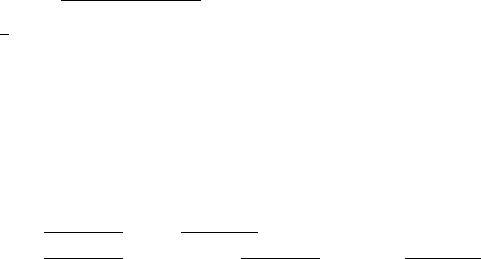
2.1. INTUITIVE TREATMENT AND DEFINITIONS |
55 |
Let > 0 be given. Without loss of generality we may assume that < 1.
Let 1 = 2(1 + |f(c)| + |g(c)|). Then 1 > 0, 1 < 1 and 1(1 + |f| + |g(c)|) = 2 < . Since f is continuous at c and 1 > 0, there exists δ1 > 0 such that
|f(x) − f(c)| < 1 whenever, |x − c| < δ1.
Also, since g is continuous at c and 1 > 0, there exists δ2 > 0 such that
|g(x) − g(c)| < 1 whenever, |x − c| < δ2.
Let δ = min{δ1, δ2} and |x − c| < δ. For these choices of x, we get
|f(x)g(x) − f(c)g(c)|
=|(f(x) − f(c) + f(c))(g(x) − g(c) + g(c)) − f(c)g(c)|
=|(f(x) − f(c))(g(x) − g(c)) + (f(x) − f(c))g(c) + f(c)(g(x) − g(c))|
≤|f(x) − f(c)| |g(x) − g(c)| + |f(x) − f(c)| |g(c)| + |f(c)| |g(x) − g(c)|
<1 · 1 + 1|g(c)| + 1|f(c)|
< 1(1 + |g(c)| + |f(c)|) , (since 1 < 1)
< .
It follows that
lim f(x)g(x) = f(c)g(c)
x→c
and, hence, the product f · g is continuous at c.
Example 2.1.17 Show that the quotient f/g is continuous at c if f and g are continuous at c and g(c) 6= 0.
First of all, let us observe that the function 1/g is a composition of g(x) and 1/x and hence 1/g is continuous at c by virtue of the arguments in Examples 14 and 15. By the argument in Example 16, the product f(1/g) = f/g is continuous at c, as required in Example 17.
Example 2.1.18 Show that a rational function of the form p(x)/q(x) is continuous for all c such that g(c) 6= 0.
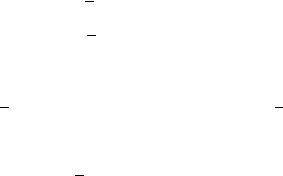
56 |
CHAPTER 2. LIMITS AND CONTINUITY |
In Example 13, we showed that each polynomial function is continuous at every real number c. Therefore, p(x) is continuous at every c and q(x) is continuous at every c. By virtue of the argument in Example 17, the quotient p(x)/q(x) is continuous for all c such that q(c) 6= 0.
Example 2.1.19 Suppose that f(x) ≤ g(x) ≤ h(x) for all x in an open interval containing c and
lim f(x) = lim h(x) = L.
x→c x→c
Then, show that,
lim g(x) = L.
x→c
Let > 0 be given. Then there exist δ1 > 0, δ2 > 0, and δ = min{δ1, δ2} such that
|f(x) − L| < 2 whenever 0 < |x − c| < δ1
|h(x) − L) < 2 whenever 0 < |x − c| < δ2.
If 0 < |x − c| < δ1, then 0 < |x − c| < δ1, 0 < |x − c| < δ2 and, hence,
−2 < f(x) − L < g(x) − L < h(x) − L < 2.
It follows that
|g(x) − L| < 2 < whenever 0 < |x − c| < δ,
and
lim g(x) = L.
x→c
Example 2.1.20 Show that f(x) = |x| is continuous at 0. We need to show that
lim |x| = 0.
x→0
Let > 0 be given. Let δ = . Then |x − 0| < implies that |x| < Hence,
lim |x| = 0
x→0

2.1. INTUITIVE TREATMENT AND DEFINITIONS |
57 |
||||||
Example 2.1.21 Show that |
|
|
|
|
|||
(i) lim sin θ = 0 |
(ii) lim |
cos θ = 1 |
|
|
|||
θ→0 |
sin θ |
|
θ→0 |
|
1 − cos θ |
|
|
(iii) lim |
= 1 |
(iv) lim |
|
= 0 |
|
||
|
θ |
|
|||||
θ→0 |
θ |
θ→0 |
|
|
|
||
graph
Part (i) By definition, the point C(cos θ, sin θ), where θ is the length of the arc CD, lies on the unit circle. It is clear that the length BC = sin θ is less than θ, the arclength of the arc CD, for small positive θ. Hence,
−θ ≤ sin θ ≤ θ
and
lim sin θ = 0.
θ→0+
For small negative θ, we get
θ ≤ sin θ ≤ −θ
and
lim sin θ = 0.
θ→0−
Therefore,
lim sin θ = 0.
θ→0
Part (ii) It is clear that the point B approaches D as θ tends to zero. Therefore,
lim cos θ = 1.
θ→0
Part (iii) Consider the inequality
Area of triangle ABC ≤ Area of sector ADC ≤ Area of triangle ADE 12 cos θ sin θ ≤ 12 θ ≤ 12 cossin θθ.
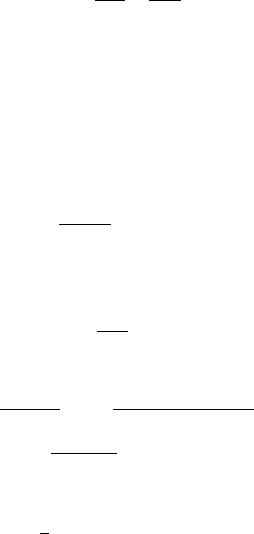
58 |
CHAPTER 2. LIMITS AND CONTINUITY |
Assume that θ is small but positive. Multiply each part of the inequality by 2/ sin θ to get
cos θ ≤ sinθ θ ≤ cos1 θ.
On taking limits and using the squeeze theorem, we get
|
lim |
|
θ |
= 1. |
|||
sin θ |
|||||||
|
θ→0+ |
|
|
|
|||
By taking reciprocals, we get |
|
|
|
|
|
||
|
lim |
sin θ |
= 1. |
||||
|
θ |
||||||
|
θ→0+ |
|
|
|
|
||
Since |
|
|
|
|
|
||
|
sin(−θ) |
= |
|
sin θ |
, |
||
|
|
|
|||||
|
−θ |
sin θ |
|
θ |
|||
|
lim |
= 1. |
|||||
|
|
θ |
|||||
|
θ−0− |
|
|
|
|
||
Therefore,
lim sin θ = 1.
θ→0 θ
Part (iv)
lim
θ→0
1 − cos θ |
= lim |
|
(1 − cos θ)(1 + cos θ) |
|||||||||
|
θ |
|
|
|
θ→0 |
|
|
θ(1 + cos θ) |
||||
= lim |
1 − cos2 θ |
· |
1 |
|
||||||||
|
|
(1 + cos θ) |
||||||||||
θ |
→ |
0 |
|
θ |
|
|
||||||
|
|
sin θ |
|
|
|
sin θ |
|
|||||
lim |
|
|
|
|||||||||
|
θ |
· 1 |
+ cos θ |
|||||||||
= θ |
→ |
0 |
|
|||||||||
|
|
|
|
|
|
|
|
|
|
|
|
|
=1 · 20
=0.
Example 2.1.22 Show that
(i) sin θ and cos θ are continuous for all real θ.

2.1. INTUITIVE TREATMENT AND DEFINITIONS |
59 |
(ii)tan θ and sec θ are continuous for all θ 6= 2nπ ± π2 , n integer.
(iii)cot θ and csc θ are continuous for all θ 6= nπ, n integer.
Part (i) First, we show that for all real c,
lim sin θ = sin c or equivalently lim | sin θ − sin c| = 0.
θ→c |
|
|
|
|
|
|
|
|
|
|
θ→c |
|
|
|
|
|
|
|
|
|
|
|
|
|
We observe that |
≤ | |
|
− |
|
| |
|
|
|
|
|
|
|
|
|
|
|
|
|
|
|
|
|
|
|
0 |
sin θ |
sin c |
= |
|
|
2 |
|
|
|
|
|
|
|
|
2 |
|
||||||||
|
|
|
|
|
|
|
|
|
|
|
|
|
|
|
|
|
|
|
|
|
|
|
|
|
|
|
|
|
|
|
|
|
|
|
(θ |
|
c) |
|
|
|
|
|
|
|
|
|
|||
|
|
|
|
|
|
≤ |
2 sin |
|
|
− |
|
|
|
|
|
|
|
|
|
|
|
|
||
|
|
|
|
|
|
|
|
|
|
2 |
|
|
|
|
|
|
|
|
|
|
|
|||
|
|
|
|
|
|
|
|
|
|
|
|
|
|
|
|
(θ |
|
|
|
c) |
|
|||
|
|
|
|
|
|
|
|
|
|
|
|
sin |
|
− |
|
|
|
|
||||||
|
|
|
|
|
|
= |
(θ |
− |
c) |
|
|
|
|
|
|
2 |
|
|
|
|
||||
|
|
|
|
|
|
|
|
(θ−c) |
|
|
||||||||||||||
|
|
|
|
|
|
|
| |
|
| |
|
|
|
|
|||||||||||
|
|
|
|
|
|
|
|
|
|
|
|
|
|
|
|
|
2 |
|
|
|
|
|
|
|
|
|
|
|
|
|
|
|
|
|
|
|
|
|
|
|
|
|
|
|
|
|
|
|
|
|
|
|
|
|
|
|
|
|
|
|
|
|
|
|
|
|
|
|
|
|
|
|
|
|
Therefore, by squeeze theorem, |
|
|
|
|
|
|
|
|
|
|
|
|
|
|
|
|
|
|
|
|||||
0 ≤ lim | sin θ − sin c| ≤ 0 · 1 = 0.
θ−c
It follows that for all real c, sin θ is continuous at c.
Next, we show that
lim cos x = cos c or equivalently lim | cos x − cos c| = 0.
x→c x→c
We observe that |
|
|
|
− |
|
|
| |
|
|
|
− |
|
|
|
|
|
|
|
|
|
|
|
|||
|
≤ | |
|
|
|
|
|
|
|
|
|
2 |
|
|
|
|
2 |
|
|
|||||||
0 |
|
cos x |
|
cos c |
|
= |
|
|
2 sin |
x + c |
sin |
(x − c) |
|
|
|||||||||||
|
|
|
|
|
|
||||||||||||||||||||
|
|
|
|
|
|
sin |
x |
|
c |
|
|
|
|
|
|
x + c |
|
|
|
||||||
|
|
|
|
|
|
|
− |
|
|
|
|
|
|
|
|
|
|
|
|
||||||
|
|
θ |
c |
| |
|
|
|
2 |
|
|
|
; |
|
sin |
|
|
|
|
≤ |
1 |
|||||
|
|
|
x−c |
|
|
|
|
|
2 |
|
|||||||||||||||
|
≤ | − |
|
|
|
|
|
|
|
|
|
|
|
|
||||||||||||
|
|
|
|
|
|
|
2 |
|
|
|
|
|
|
|
|
|
|
|
|
||||||
|
|
|
|
|
|
|
|
|
|
|
|
|
|
|
|
|
|
|
|
|
|
|
|
|
|
|
|
|
|
|
|
|
|
|
|
|
|
|
|
|
|
|
|
|
|
|
|
|
|||
|
|
|
|
|
|
|
|
|
|
|
|
|
|
|
|
|
|
|
|
|
|
|
|
|
|
Therefore,
0 ≤ lim | cos x − cos c| ≤ 0 · 1 = 0
x→c
and cos x is continuous at c.
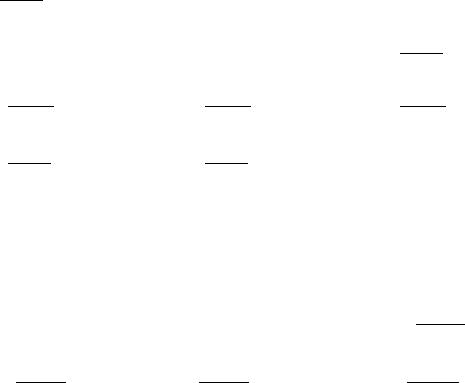
60 |
CHAPTER 2. LIMITS AND CONTINUITY |
||||
Part (ii) Since for all θ 6= 2nπ ± π2 , n integer, |
|
|
|||
|
tan θ = |
sin θ |
, sec θ = |
1 |
|
|
|
cos θ |
|||
|
|
cos θ |
|||
it follows that tan θ and sec θ are continuous functions.
Part (iii) Both cot θ and csc θ are continuous as quotients of two continuous functions where the denominators are not zero for n 6= nπ, n integer.
Exercises 2.1 Evaluate each of the following limits.
1. |
lim |
x2 − 1 |
|
2. |
lim |
sin(2x) |
|||||||||
x3 − 1 |
|
|
x |
|
|||||||||||
x→1 |
x→0 |
|
|
||||||||||||
4. |
lim |
|
1 |
|
|
5. |
lim |
1 |
|
|
|||||
|
|
|
|
|
|
|
|
|
|
|
|
||||
|
x2 − 4 |
|
x2 − 4 |
||||||||||||
x→2+ |
|
x→2− |
|
||||||||||||
7. |
lim |
|
x − 2 |
8. |
lim |
|
x − 2 |
||||||||
|
|x − 2| |
|
|x − 2| |
||||||||||||
x→2+ |
|
x→2− |
|
||||||||||||
10. |
lim |
|
x2 − 9 |
|
11. |
lim |
|
x2 − 9 |
|
||||||
|
x→3 |
|
x − 3 |
|
x→3 |
|
x + 3 |
||||||||
13. |
lim |
tan x |
14. |
lim csc x |
|||||||||||
|
x→π2 |
+ |
|
|
|
|
|
x→0− |
|||||||
16. |
lim cot x |
17. |
lim cot x |
||||||||||||
|
x→0+ |
|
|
|
|
|
|
x→0− |
|||||||
19. |
lim sec x |
20. |
lim |
|
sin 2x + sin 3x |
||||||||||
|
|
|
|
|
x |
||||||||||
|
x→π2 |
|
|
|
|
|
|
|
x→0 |
|
|
|
|
|
|
|
|
|
|
√ |
|
|
|
|
|
√ |
|
|
|
||
22. |
lim |
|
|
x − 2 |
23 lim |
|
|
x − 2 |
|
||||||
|
x − 4 |
|
x − 4 |
||||||||||||
|
x→4+ |
|
|
x→4 |
|
||||||||||
3. |
lim |
sin 5x |
|
||
sin 7x |
|||||
|
x→0 |
||||
6. |
lim |
x − 2 |
|||
x2 − 4 |
|||||
|
x→2 |
||||
9. |
lim |
x − |
2 |
||
|
|
||||
|x − |
2| |
||||
|
x→2 |
||||
12. lim tan x
x→π2
15. lim csc x
x→0+
18. lim sec x
x→π2 +
|
√ |
|
− 2 |
|
21. lim |
x |
|||
|
|
|||
x − 4 |
||||
x→4− |
||||
24. lim x4 − 81
x→3 x2 − 9
Sketch the graph of each of the following functions. Determine all the discontinuities of these functions and classify them as (a) removable type,
(b) finite jump type, (c) essential type, (d) oscillation type, or other types.
